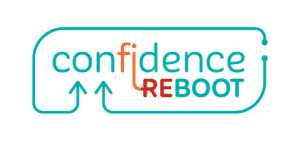Reading body language can be tough. This guide will help you decipher and understand nonverbal communication. It will provide insight into the nonverbal gestures people make.
Why is good body language important? Great body language is important because it communicates how a person feels. Subtle positions communicate big ideas like a wink or a gesturing hand. Emotion and body language are symbiotic.
People aren’t aware of which aspects of body language reveal their deepest thoughts. We will talk about what is often missed.
People often overlook how they are managing their movements and other nonverbal signals.
Many people are surprised at the effect they get from others once they start taking ownership of their own body language, eye contact, facial expressions, movement of arms and hands, and other nonverbal signals.
Wanna make a great impression? Need to get your body language and poise in line for upcoming job interviews? Maybe you want to attract that new special person into your life or are taking on a leadership role.
You’re going to need to get those nervous gestures, the unruly face, and unwanted behaviors under control.
But where do you even start? Is it the handshake, eye contact, posture, or facial expressions?
You will learn how to spot positive and negative body language from people and from yourself.
The importance of body language
Our body language reveals so much. Our body language is a complete conversation all by itself and gives away valuable information to anyone who is watching carefully.
If you want to improve your body language or know what positive body language looks like, or even develop good business body language, I will provide some good examples of body language and help you be aware of your body language like never before.
Communication skills are a whole-body experience and non-verbal communication is the language of the body. Whether you are going for a job interview your mental health is expressed through your body movements.
Consider a keynote speaker and what they look like on stage. Self-esteem permeates their stage presence gets the message across to their audience. The language of self-confidence is comprised of mostly nonverbal communication.
If it’s important to learn more about speaking in front of other people, you can get all the hacks from another article I wrote.
When it comes to understanding and learning about body language, it’s important to break them down to situation and environment.
- Body language in the workplace
- Body language and confidence
- Body language and learning how to read hidden intentions
- Body language in relationships
- Body language and emotional states
- Learning how to become a body language expert
Table of Contents
Step 1. Learning To Be Aware Of Your Body Language
If you are serious about taking on your very own body language project, you might want to incorporate friends.
Ask them what the first impression they ever had of you was. How was your voice, tone, stance, openness, facial expression? How did you use your shoulders, your hand gestures?
Was there any negative body language showing through, or was it all positive body language? How did you shake hands? Was it firm, loose, receding?
The answer to these questions may vary from person to person, but it will give you an insight into what your nonverbal signals were, and it’s been said that nonverbal communication speaks louder than words.
One hack to learning to read body language well is to pay close attention to your own body language when you feel a specific way.
You may have to put a sticky note somewhere to remind you to stop and take inventory of your body and your feelings. Or, set an alarm on your phone to stop and check in on your feelings and stance.
Push pause on your life a couple of times a day and take inventory of the following important signals.
It’s important to get a grasp of how you hold your body.
Step 2. Practice Perfect (Improved) Body Language.
You may have heard it said that you can feel your way into action as well as act your way into a feeling. Even if you are feeling down, you can turn your situation around by consciously taking a few minutes to practice positive body language. (See the list below)
Now that you are beginning to get a handle on how you tend to move and position your body when you are experiencing certain emotions, you will be better equipped to begin to modify it.
Many people discover that just by modifying their body language and standing posture, they can change their body chemistry, mood, and well being.
Who knew that the science of gesture modification (not really such a thing) was something that could affect us in ways everyone would have thought was impossible two or three decades ago.
Look for the cues for better interactions.
Quick Tips To Resetting Your Body Language:
- Do mirror work
- Instead of phone calls do Facetime and notice how you communicate with your arms, hands, vocal inflection, and facial expression.
- Pick one body part for the day and constantly pay attention to your posture and other nonverbal communication.
- Set a timer to stop and take a selfie to see what your face is saying.
- Keep a mirror in your pocket. Randomly take a look at your facial expression.
As you start to track your progress, ask yourself, am I maintaining eye contact with the people I’m talking to? Where are my arms, my hands, and how are my legs positioned?
To be aware of your body language, here are the things that you should include the following items.
Elements of Body Language:

You can make a body language checklist that incorporates the following items:
- Body Posture (Slumped or a good posture) (Position and Angle)(Open or Closed)
- Movements (Broad or Small)
- Facial Expressions
- Head (Forward (down towards the ground) / Upright) – Hair in place
- Eyes (Squint, Smiling, or Relaxed) – Do you have an 11 from creasing your forehead?
- Eye Contact (Resistant or Listening)
- Smile (or Frown)
- Arms (Close to Body or Extended)
- Hands (Fidgety or Relaxed)
- Feet (Pointed at Exit or a Person or Away from a Person)
Then evaluate the feelings you were experiencing at the time:
- Confidence (Yes or No)
- Stress (Yes or No)
- Needing Space or Craving Privacy (Yes or No)
- Happy (Yes or No)
- Sad (Yes or No)
- Open to Talking (Yes or No)
Step 3. Create Your Image
Create the ideal image(s) of how you would stand, move, act, and speak if you were feeling confident, positive, successful, and in control of your life.
Here are some examples of positive and negative body language?
What is an example of positive body language?
Positive body language incorporates openness and uprightness. If you take up a lot of space in your three feet of personal space, you will appear more confident and generally more positive. Eyes forward.
People in a positive state also tend to use bigger motions with arms and hands. Think of how you talk about a funny situation or tell a funny story.
Negative body language is usually characterized by nonverbal signals that remain small by comparison. If people don’t feel comfortable, they tend to want to hide in plain sight.
People make themselves as small as possible. Remember, people often aren’t conscious that they are doing this.
Usually, their legs may be crossed or close together (if they are setting). Arms are pinched close to their sides. They shrink into the space around them. Their personal space bubble gets smaller.
They may put a hand over their face or neck, or a hand behind the neck or hands in front of the genitals. All of those positions signal a need for protection. They feel insecure about something.
What are the 5 types of body language?
While body languages can vary across cultures, they remain relatively universal. The big exception is Asian culture and eye contact. Eye contact and the avoidance of it sends a message of respect.
When it comes to Western Language Body Indicators, this list should give you some insight on what to pay attention to and what the messages that are potentially communicated. Avoid misunderstandings and misinterpretation.
- Posture, Poise, and Space – How You Manage Personal Space
- Facial Expressions – Muscles in Forehead, Frown, Smile, Surprise
- Eye Contact – Happy, Smiling, Contentment, Disgust, Anger
- Movement and Touch – Kinesthetic Indicators with Shoulders, Arms, Hands at Waist level (covering genitals), Direction of Hips, Legs, and Foot Pointing
- Voice, Vocal Tone, Tone of Voice, and Vocal Intensity/Volume/Power
Learn more about body language by studying these books.
Further thoughts
You don’t need someone like a mental health professional to tell you that if you approach your family members, friends, and other individuals with a bit of team spirit and a sign of positive energy and interest, anything is possible.
You may get a sense that others become a new basis for support.
Here are some great books that I can recommend on Body Language.
Meeting opinions and situations with actions that are consistent with a positive outlook, a chest that points forward, positive posture, chin up, eyes forward, level ear position, palms, and fingers open and relaxed may give you an interaction advantage.
Take charge of your life, experience success, and combat fear and nervousness by setting aside tension.
Take my advice.
Your world doesn’t have to be filled with discomfort, boredom, submission, a lack of focus, the sense you don’t have the ability to trust, or establish great relationships.
In fact, you can change a lot by simply taking the time to take a second look at how you care for the signs and the responses you provoke in others.
